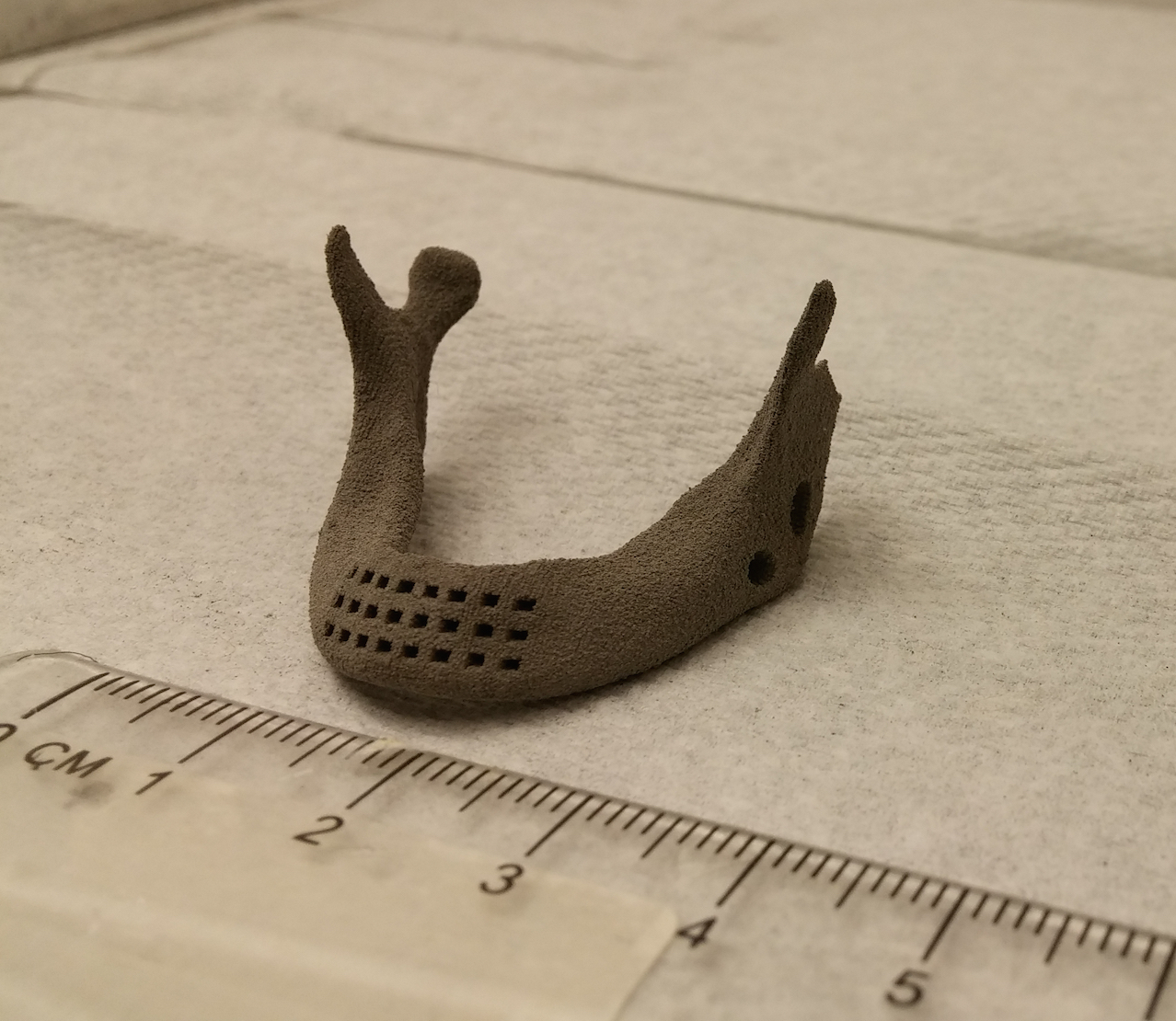
Serious injury or damage to the face and head can require bone grafts. But 3D printing is emerging as an option to tailor artificial bone scaffolds to fit the patient’s needs exactly. And if those scaffolds can be made from biodegradable metals, patients can avoid removal surgeries at a later stage.
Now researchers from the University of Pittsburgh, Robert Morris University, Ort Braude College in Israel, and ExOne Company think they have come up with the ideal mix of metals to create an alloy that will degrade without eliciting a toxic response [Hong et al., Acta Biomaterialia (2016), doi: 10.1016/j.actbio.2016.08.032].
“Mg is by far the most popular and attractive metal of choice as a biodegradable or bioabsorbable system since it has properties very similar to bone,” explains Prashant N. Kumta of the University of Pittsburgh. “The only limitation is that it degrades very rapidly.”
To overcome this problem, researchers have investigated other metals like Fe, which degrades very slowly. A combination, however, of Mg and Ca alloyed with Fe-Mn could offer a solution.
The team created Fe-Mn-Mg/Ca alloys using a process known as high energy mechanical milling (HEMM) or high energy mechanical alloying (HEMA) in which powders of each element are pulverized together by stainless steel balls in a mill. A scaffold of any shape can then be built up layer-by-layer via a 3D printing process called binder-jetting where a liquid binder is ejected through a nozzle, holding the alloy powder together. A curing step after the structure is created removes the binder, while subsequent heating joins the alloy powder particles together.
“The Fe-Mn-Mg/Ca alloys are unique and [this] is the first demonstration that introducing Mg and Ca can accelerate corrosion,” says Kumta. “The alloy is also cytocompatible without eliciting any toxic response.”
While the results demonstrate that the Fe-Mn-Mg/Ca alloys can be easily 3D printed using the binder jetting approach, other additive manufacturing methods should work just as well, say the researchers.
The resulting alloys have just the right combination of strength, ductility, and controlled, rapid corrosion for use as degradable bone scaffolds.
“These alloys could be more acceptable than Mg-based alloys, which exhibit rapid corrosion leading to hydrogen pockets that can cause toxicity of the local tissue,” explains Kumta.
The only problem is that the alloy particles produced by milling tend to vary in size and shape. This can produce structures that are quite porous – which is good from the corrosion point of view but less advantageous in terms of strength. The researchers believe that atomization and quenching strategies, which would produce more spherical alloy particles, could overcome this shortcoming.


